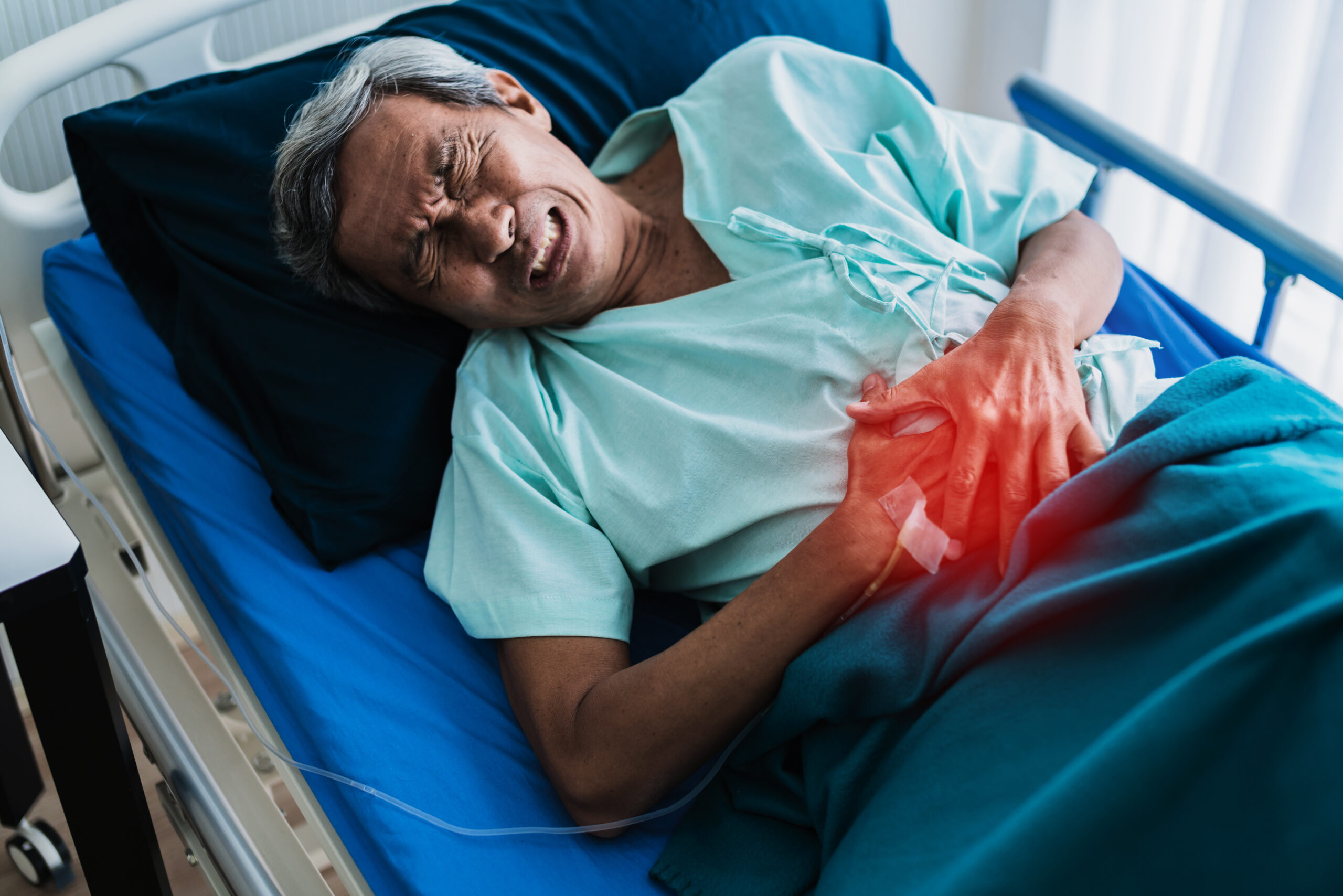The liver is the largest organ of our body which is situated in the upper right quadrant of the abdominal cavity, beneath the diaphragm, and on top of the stomach, right kidney, and intestines. Two distinct sources supply blood to the liver which include oxygenated blood flowing in from the hepatic artery and nutrient-rich blood flowing in from the hepatic portal vein. The venous blood of the liver is drained through the system of veins called the hepatic venous system. In Budd Chiari Syndrome, the veins that drain blood away from the liver are blocked by blood clots or narrowed which causes accumulation of blood inside the liver. The main functions of the liver are,

- The maintenance of chemical balance in the body.
- The production of protein & bile.
- Detoxification of the toxic agents produced in the body.
This can also be identified as a disease that typically affects young females.
The accumulation of blood inside the liver can cause liver enlargement which can progressively cause liver dysfunction. This disease can also affect the spleen which is a solid abdominal organ which is situated in the left upper quadrant of the abdomen and has the main function of fighting against infections. Due to the backflow of blood in the venous system, spleen can also get enlarged and reduce its functional level.
Causes of Budd Chiari Syndrome
The main causes are diseases or conditions that exacerbate the formation of blood clots in the circulation. They can be listed below.
- Myeloproliferative diseases include conditions that affect the blood and bone marrow, including polycythemia in which more red blood cells are formed. and thrombocythemia in which the body produces too many platelets.
- Sickle cell disease is a disorder of the blood in which red blood cells change shape from their typical round shape to sickle-shaped.
- Inflammatory bowel disease includes a group of disorders that cause irritation and swelling of the digestive tract.
- Pregnancy is also a condition that makes your body predisposed to form blood clots.
- Long-term use of oral contraceptives
- Paroxysmal nocturnal hemoglobinuria
- Hepatocellular carcinoma
- Lupus anticoagulants
- It can also occur due to compression of the hepatic vein by an outside structure such as tumors which is called secondary Budd Chiari syndrome.
- Budd–Chiari syndrome is also seen in tuberculosis, congenital venous webs, and occasionally in the narrowing of the vein, and inferior vena cava.
Clinical Features of Budd Chiari Syndrome
The symptoms of Budd-Chiari syndrome include:
- Pain predominantly in the upper abdomen.
- Ascites or the swelling in the abdomen caused by excess fluid accumulation.
- Jaundice or the discoloration of the skin and whites of the eyes and mucous membranes into yellow color.
- Enlarged and tender liver felt in the right upper quadrant of the abdomen.
- An enlarged and tender spleen was felt in the left upper quadrant of the abdomen.
- Bleeding in the esophagus
- Swelling of the legs
- Failure of liver functioning
- Hepatic encephalopathy reduced brain functioning caused by liver disease.
- Vomiting
- Enlarged spleen
- Fatigue or feeling of extreme tiredness
- Later you can even get encephalopathy
Complications
- Bleeding from the enlarged blood vessels in the esophagus is called variceal bleeding.
- Reduced functioning of kidneys.
- Increased blood pressure in the portal system of blood vessels.
- Bacterial peritonitis in the presence of ascites.
- Hepatocellular carcinoma.
Diagnosis of Budd Chiari Syndrome
Initially, the doctor will ask for specific questions from you regarding the history of the presenting complaint. Then you will be examined for any signs suggestive of Budd Chiari Syndrome. Later you will be recommended for specific blood and radio-graphical investigations to confirm the diagnosis.
The specific blood investigations include assessment of liver enzymes such as alanine aminotransferase (ALT) and aspartate aminotransferase (AST) which are often elevated in the initial stage of disease and then decrease over time as chronic liver disease develops. Liver dysfunction can be indirectly measured in laboratory investigations as INR test which gets elevated, albumin levels which get decreased, and bilirubin levels which can get elevated.
But this disease is ideally diagnosed by doing ultrasound scans of the abdomen using the imaging study of blood vessels which is called Retrograde Angiography. Computed tomography (CT) or Magnetic Resonant Imaging (MRI) is also used sometimes to confirm the diagnosis. Assessment of biopsies taken from the liver is also another rarely used specific investigation.
Management of Budd Chiari Syndrome
When treating Budd-Chiari Syndrome your doctor will initially try to correct the underlying pathology which had given rise to this condition such as Hypercoagulability, or the Primary Hypercoagulable Disorder leading to the Budd-Chiari Syndrome. For example, the most common condition which causes Budd Chiari syndrome is the group of Myeloproliferative Disorders that have specific management guidelines.
Pharmacological Management
- Drugs as beta blockers are given to prevent you from getting variceal bleeding.
- Diuretic drugs which excrete fluid from your body can be given to patients who are having distended abdomens due to accumulation of fluid (Ascites)
- All patients diagnosed with the disease are prescribed an anticoagulant drug which causes reduced clot formation in blood circulation. Preferred anticoagulant drug is Warfarin.
Surgical Management
- Most of the patients will require further interventions to be done even after pharmacological treatment.
- Surgical shunts are used to redirect blood flow avoiding the obstruction.
- Percutaneous transluminal angioplasty is another method which is used to treat this condition. During this procedure, your doctor will pass a balloon via a guidewire to the site of the venous obstruction and then inflate it to open the blockage
- Liver transplantation is also an effective treatment method that is normally used in the final stages of disease such as in fulminant liver failure, failure of shunts, and progression in to cirrhosis.
How will you be managed if you are pregnant?
- Same as in non-pregnant patient’s drugs that reduce blood clot formation known as anticoagulants are continued, while Warfarin is replaced by Enoxaparin as warfarin can cause negative effects on the baby.
- You will be screened for high pressure in the portal venous system and for variceal bleeding in the esophagus.
- Also, you must keep in mind that having Budd Chair Syndrome in pregnancy can be associated with an increased risk of miscarriages and prematurity.
Lifestyle Modifications
It is important to practice healthy lifestyle habits that promote the health and well-being of the liver such as below.
- Should engage in regular exercise and maintain your weight in the healthy BMI range.
- Follow a healthy diet that is balanced with all the required multi-nutrients.
- Avoid alcohol intake as it can directly harm the liver.
- Some drugs can also cause adverse effects on your liver. Because of that, it is important to take only the drugs prescribed by a medical doctor and avoid getting over-the-counter drugs as you preserve.
References
- Bailey and Love’s Short Practice of Surgery- 27th Edition
- Kumar and Clerk’s Clinical Medicine -8th Edition- Parveen Kumar, Michael Clark
- Oxford Handbook of Clinical Medicine – 10th Edition
- Browse’s Introduction to the Symptoms and Signs of Surgical Disease – 4th Edition – Norman L. Browse, John Black, Kevin G. Burnand and William E.G. Thomas
- Image by Lifestylememory on Freepik

